Saudi Arabia: Long-Term Strategy For Asian Investment 03/23/17 •lweb.es/f2703 •bit.ly/2peKLnK
Saudi King Salman’s lavish tour of Asia had a mission – to cement the kingdom’s place as leading oil supplier to the world’s biggest consumer region. The string of deals inked on his three-week tour to Malaysia, Indonesia, Japan, and China – the big prize – also point to a fresh strategy: growth in the downstream. Chief executive officer of Aramco, Amin Nasser, said on this: “The growth in that sector is very important, and anything integrated between refining, petrochemical, with marketing and distribution, is of interest to us.”


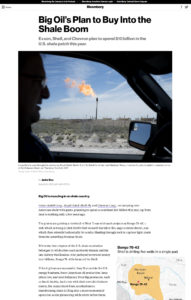 Exxon Mobil, Royal Dutch Shell and Chevron plan to spend a combined $10 billion this year in American shale.
Exxon Mobil, Royal Dutch Shell and Chevron plan to spend a combined $10 billion this year in American shale. 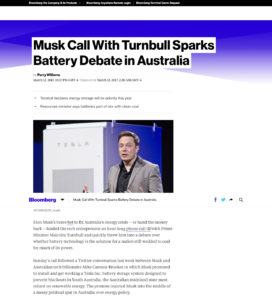 Elon Musk has promised to install and get working a Tesla Inc. battery storage system designed to prevent blackouts in South Australia, the Australian mainland state most reliant on renewable energy.
Elon Musk has promised to install and get working a Tesla Inc. battery storage system designed to prevent blackouts in South Australia, the Australian mainland state most reliant on renewable energy. 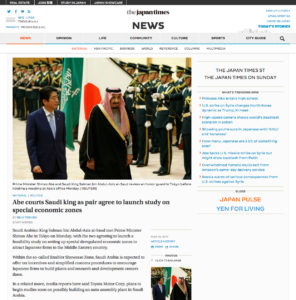 Saudi Arabian King Salman bin Abdul-Aziz al-Saud and Japan PM Shinzo Abe met in Tokyo and agreed to launch a feasibility study on setting up special deregulated economic zones to attract Japanese firms to the Middle Eastern country.
Saudi Arabian King Salman bin Abdul-Aziz al-Saud and Japan PM Shinzo Abe met in Tokyo and agreed to launch a feasibility study on setting up special deregulated economic zones to attract Japanese firms to the Middle Eastern country. 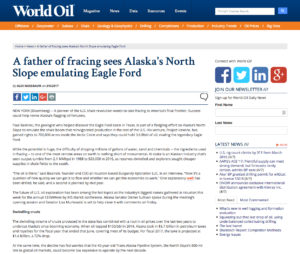 A pioneer of the U.S. shale revolution, Paul Basinski, wants to take fracking to America’s final frontier – Alaska.
A pioneer of the U.S. shale revolution, Paul Basinski, wants to take fracking to America’s final frontier – Alaska. 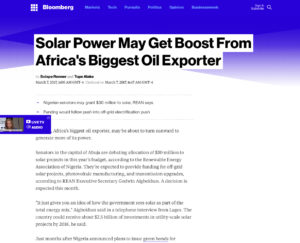 Nigeria is debating the allocation of $30 million to solar projects in this year’s budget with funding expected for off-grid solar projects, photovoltaic manufacturing, and transmission upgrades.
Nigeria is debating the allocation of $30 million to solar projects in this year’s budget with funding expected for off-grid solar projects, photovoltaic manufacturing, and transmission upgrades. 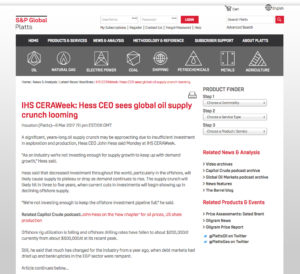 A significant, years-long oil supply crunch may be approaching due to insufficient investment in exploration and production, Hess CEO John Hess said at the IHS CERAWeek, and this will begin showing up in declining offshore supply. He added that “The shale business is back in business and starting to grow again,” but such growth in US shale would not be enough to meet global oil demand, which the International Energy Agency has projected to grow between 1.4-1.6 million barrels a day over this year and the next.
A significant, years-long oil supply crunch may be approaching due to insufficient investment in exploration and production, Hess CEO John Hess said at the IHS CERAWeek, and this will begin showing up in declining offshore supply. He added that “The shale business is back in business and starting to grow again,” but such growth in US shale would not be enough to meet global oil demand, which the International Energy Agency has projected to grow between 1.4-1.6 million barrels a day over this year and the next.